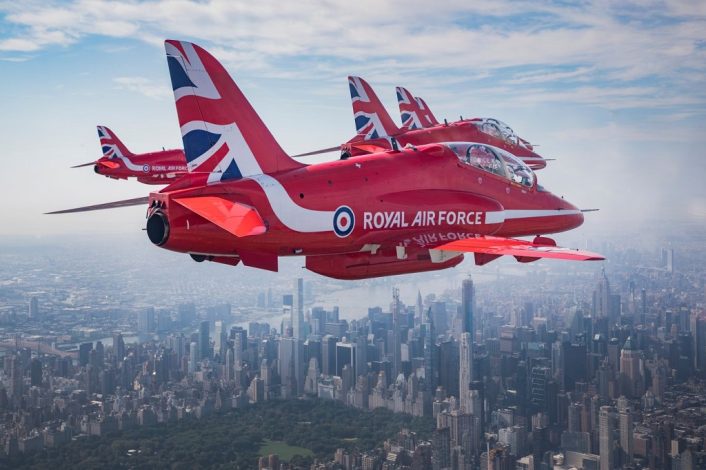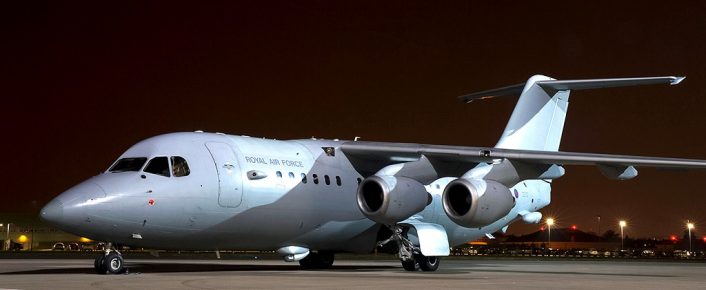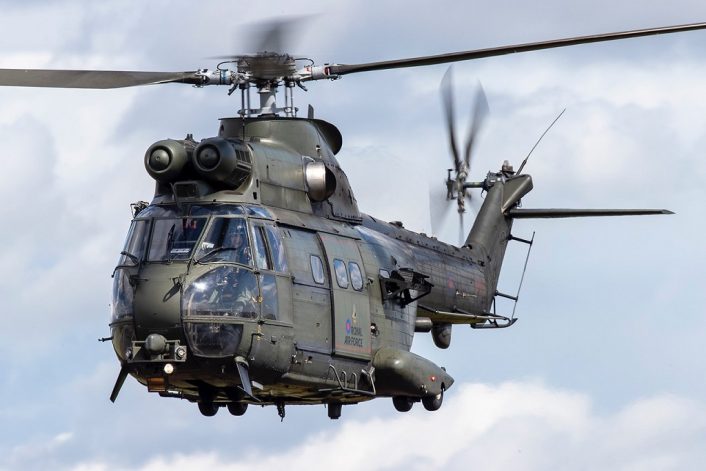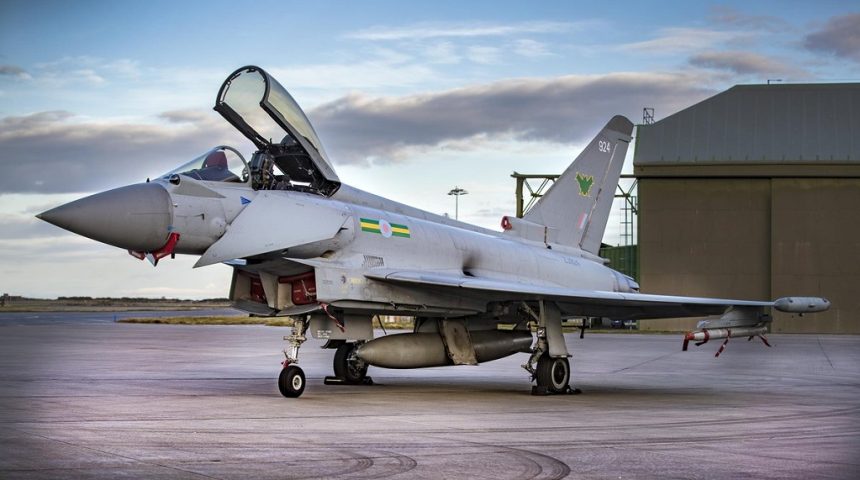The Defence Review, which will radically transform the Royal Air Force, Army and Navy by the next decade, has been described as one of the largest since the Cold War.
The UK’s government published the latest Integrated Defence Review on March 16, 2021, which has been described by Prime Minister Boris Johnson as “the most comprehensive since the Cold War”. A few days later, on March 22, the Ministry of Defence published its own report, called “Defence in a Competitive Age”, which outlines the effects of the review on the British armed forces.
In this story we will give a closer low at the changes that will be made to the British military and the motives behind those decisions, focusing mainly on the aviation components of the three military services. You can read the entire report at this link.
According to the “Defence in a Competitive Age” report, the Integrated Defence Review assessed the major trends that will shape the national security and international environment to 2030, changing the nature and distribution of global power. Among the trends that have been identified, four are considered to be of particular importance:
- Geopolitical and geo-economic shifts, such as the growing importance of the Indo-Pacific, China’s increasing international assertiveness and the influence of middle powers.
- Systemic competition, including between states, and between democratic and authoritarian values and systems of government.
- Rapid technological change, that will reshape our economies and societies, bringing enormous benefits but also becoming an arena of intensifying geopolitical competition.
- Transnational challenges that require collective action, such as climate change, biosecurity risks, terrorism and serious and organised crime.
These trends will be affected also by the long-term effects of the COVID-19 pandemic.

Along with the four aforementioned trends, the review identified also four countries that pose significant challenges in the near future:
“Russia continues to pose the greatest nuclear, conventional military and sub-threshold threat to European security. Modernisation of the Russian armed forces, the ability to integrate whole of state activity and a greater appetite for risk, makes Russia both a capable and unpredictable actor. The rising power of China is by far the most significant geopolitical factor in the world today. China poses a complex, systemic challenge. Iran and North Korea will continue to pose regional challenges and their nuclear programmes threaten global stability.“
Obviously, the review mentions terrorism too, which will continue to pose a dynamic and evolving threat to the UK and its interests (possibly expanding even in the cyberspace), but it also mentions climate change and health emergencies as threat multipliers. Moreover, the newer domains of cyberspace and space will pose significant challenges and will need to be integrated with the traditional maritime, land and air military domains, as multidomain operations will become the norm.
Let’s now give a look at the consequences of the Defence Review on the armed forces, beginning from the Royal Air Force. The first reference is to the Combat Air capability, which will continue to grow over the next few years as all seven operational Typhoon Squadrons will be fully established and the Lightning II Force will be increased beyond the 48 F-35Bs already ordered. Works will continue also for the 6th generation aircraft, with a strategic investment of more than £2 billion over the next four years in the Future Combat Air System (FCAS).
If anybody wants to make comparisons, USAF has spent $2.362 billion on NGAD from FY2019-2021. Another $8.134 billion is budgeted from FY2022-2025.
£2 billion over the next four years is equal to $2.77 billion. https://t.co/hkA9gzR200
— Steve Trimble (@TheDEWLine) March 22, 2021
To reach these objectives, however, the RAF needs to make some cuts, retiring equipment that has increasingly limited utility and rationalising older fleets to improve efficiency. Among the soon-to-be-retired aircraft we can find the older Tranche 1 Typhoons, which will leave the RAF by 2025, and the Hawk T1 trainers. This will allow new funds for the Typhoon and F-35 development, which will both see the integration of new weapons and capabilities.
The older Typhoons were previously scheduled to fly until 2030 while fulfilling air defence and aggressor roles. About 24 out of a total of 157 Typhoons should be affected by this decision, which were not scheduled to receive the Centurion upgrades and are assigned to the No. IX Squadron, based at RAF Lossiemouth, for QRA and aggressor missions.
The Hawk T1 fleet is way larger than the number of the Tranche 1 Typhoons, as it will involve about 76 aircraft. After the T1 retirement, only 28 newer Hawk T2 trainers will remain in service. One notorious unit that uses the Hawk T1 is the Red Arrows Aerobatic Team, which might retain, for now, its jets. According to the Express, the Red Arrows will not be touched by the review, but the “clock is ticking” for them as the Ministry of Defence can no longer afford to finance them.
“Given the financial challenges which the RAF and, indeed, all services are facing, and anticipating no sudden upsurge in budget, funding the team is becoming challenging to the point that we must consider either finding a new, additional and substantial stream of income or letting go,” said a senior RAF source quoted by the newspaper.
While flight demonstration teams usually haven’t operational roles, they play an important marketing role, for both the service and the national aerospace industry. Display teams all around the world are every and now reported to be at risk of cuts; for now, the team bought itself some time, as “the Red Arrows has arranged a raft of sponsorship deals with some blue-chip brands, ranging from BAE, Barbour and Breitling to Land Rover and Rolls Royce, worth just under a million pounds in total.”

Other soon-to-be-retired aircraft can be found in the support area. The Royal Air Force is retiring the BAe146, as planned, by 2022 and, almost by surprise, the C-130 Hercules by 2023, as we already reported as soon as it was announced. These capabilities should be fulfilled by the A400M Atlas, the C-17 Globemaster and the Voyager tanker, although it sounds almost ironic that the service is getting rid of the Super Hercules while other allied nations are just introducing it. Moreover, the A400 in particular, will have to take over the Special Operations support role the C-130s had. And it might be a difficult task, considered the available time.
A special mention goes to the BAe146. The aircraft, operated by the No. 32 (The Royal) Squadron for VIP and transport flights, was planned to be retired from service on March 31, 2022 and replaced by a new type that was under consideration. The Review did not mention any replacement for the aircraft however, just a few days ago, photos emerged online of a new Airbus A321 NEO recently painted in the same livery of the Voyager “Vespina”, with the Union Jack on the tail and the writing “United Kingdom” on the fuselage.
This looks better. In all its shiny new paint scheme. Credit to Michael Pearce. pic.twitter.com/rtD10GCNZm
— Connor Dumigan (@ConnorDumigan) March 22, 2021
The first aircraft to be retired, however, will be another iconic aircraft, the E-3D Sentry AEW Mk1, which will be retired this year ahead of its replacement with the E-7 Wedgetail in 2023. The RAF had five aircraft on order that should have been delivered from 2023 to 2026 and based at RAF Lossiemouth together with the nine P-8 Poseidons. The number of the Wedgetails, however, has been reduced, following the Defence Review, to just three aircraft.
No surprises were revealed for the Unmanned Aerial Vehicles, as it was confirmed that the nine MQ-9 Reaper Remotely Piloted Aircraft Systems will be replaced by 16 Protector RG Mk1 RPASs by 2024. The new aircraft is the British variant of the MQ-9B SkyGuardian and is already flying in the United States ahead the RAF’s test and evaluation program.
As for the helicopters, the oldest CH-47 Chinook heavy-lift helicopters currently in the fleet will be retired and replaced by newer ones, enhancing capability, efficiency and interoperability, as mentioned in the report. Investments are scheduled in the mid-2020s for a new medium lift helicopter for the Army that will consolidate the fleet from four types to just one.

While not specified, the four types considered are the Gazelle AH1, AW159 Wildcat AH1, Bell 212 AH1, and the Puma HC2. The latter is not operated by the Army, but by the RAF, just like the Chinook fleet. The report did not disclose additional info about the replacement at this time, however, according to reports, Leonardo proposed its AW149 medium-lift helicopter as a potential replacement. A silhouette similar to the AW149 has also been used to indicate the new medium lift helicopter in the report, but this might be just a coincidence.
As for the Royal Navy, there are no particular news for their air component. The Merlins, both in the Mk2 ASW and Crowsnest variants and the Mk4 will remain in service as planned. Actually, the Crowsnest variant just entered service at the 820 Naval Air Squadron. The new helicopter will perform the Airborne Early Warning role within the carrier strike group, a role that once was of the Sea King AEW variants, the most recent being the ASaC Mk7.
The Crowsnest kit, which can transform any of the Merlin HM2 in the AEW variant, consists in a Thales Searchwater 2000 radar housed inside a large fairing on the port side of the helicopter and is an upgrade of the system used on the Sea King. Initially Lockheed Martin, which developed the Crowsnest system with Leonardo and Thales as subcontractors, proposed a radar based off the F-35’s Northrop Grumman AN/APG-81 radar that was tested in 2011. Budget restraints, however, forced the choice of a cheaper solution.
The first CROWSNEST-equipped Merlin has entered service with the RN @820NAS
More to follow… pic.twitter.com/x4FZ09zBZO
— Navy Lookout (@NavyLookout) March 24, 2021
Last, but not least, the Carrier Strike Group (CSG). The UK is pitching the CSG in the high readiness forces available to NATO, ready to respond to threats within 30 days. After the Combined Joint Expeditionary Force (CJEF) with France reached full operating capability in 2020, the two nations are also working to ensure co-operation and alignment of national deployments of the respective Carrier Strike Groups. Here’s a mention from the report about the CSG:
“International and interchangeable by design, the CSG offers unique strategic flexibility, from countering state threats and non-state threats, through to humanitarian and disaster relief. A UK CSG will be permanently available to NATO, an embodiment of our unwavering commitment to the defence and deterrence of the Euro-Atlantic area. The strategic utility of the CSG will be demonstrated by its inaugural deployment in 2021 to the Indo-Pacific region. Integrated with United States Navy and United States Marine Corps it will showcase the UK’s ability to project global influence and send a powerful message about our ability, and our willingness, to act globally.”
Obviously, many of the decisions mentioned in the “Defence in a Competitive Age” report are still subject to change but, in either case, the UK armed forces are set to undergo some radical changes before the end of this decade, making sure that the country is ready for the challenges that will be found in the 2030s.









